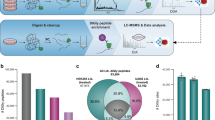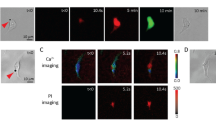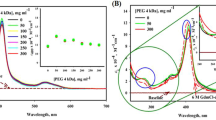Abstract
DURING the course of experiments conducted on the sheep foetus, dyes were injected into the umbilical cord with the object of exploring movements of substances in the cord along non-vascular pathways. The dyes used were a dis-azo dye, related to trypan blue, and the same dye linked to serum albumin by a diazo linkage. The dye, when linked to protein in this way, cannot dissociate from the albumin, and hence acts as a tag to the protein. These substances were prepared by one of us (P.D.M.).
Similar content being viewed by others
Article PDF
References
Tait, L., Proc. Roy. Soc., 24, 417 (1875).
Author information
Authors and Affiliations
Rights and permissions
About this article
Cite this article
BARCROFT, J., DANIELLI, J., HARPER, W. et al. Wharton's Jelly Considered as a Conducting Path. Nature 154, 667 (1944). https://doi.org/10.1038/154667a0
Issue date:
DOI: https://doi.org/10.1038/154667a0
This article is cited by
-
Structure and Nutrition of the Cornea, Cartilage and Wharton's Jelly
Nature (1945)
-
Structure of Wharton's Jelly
Nature (1945)
-
Wharton's Jelly Considered as a Conducting Path
Nature (1944)



